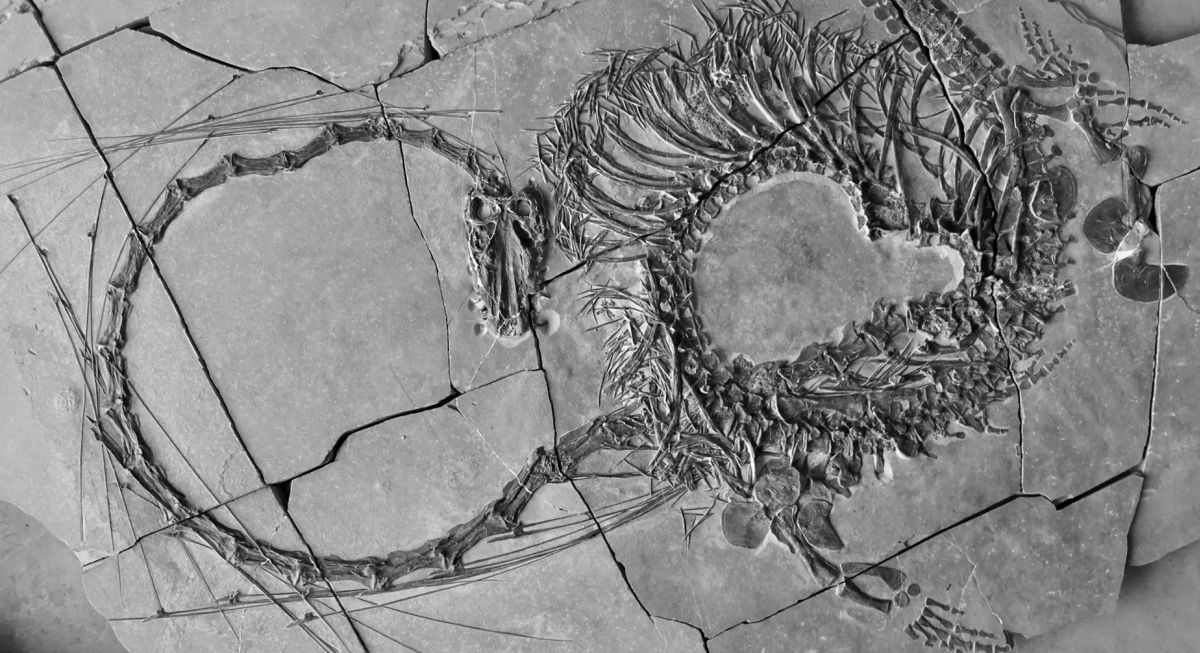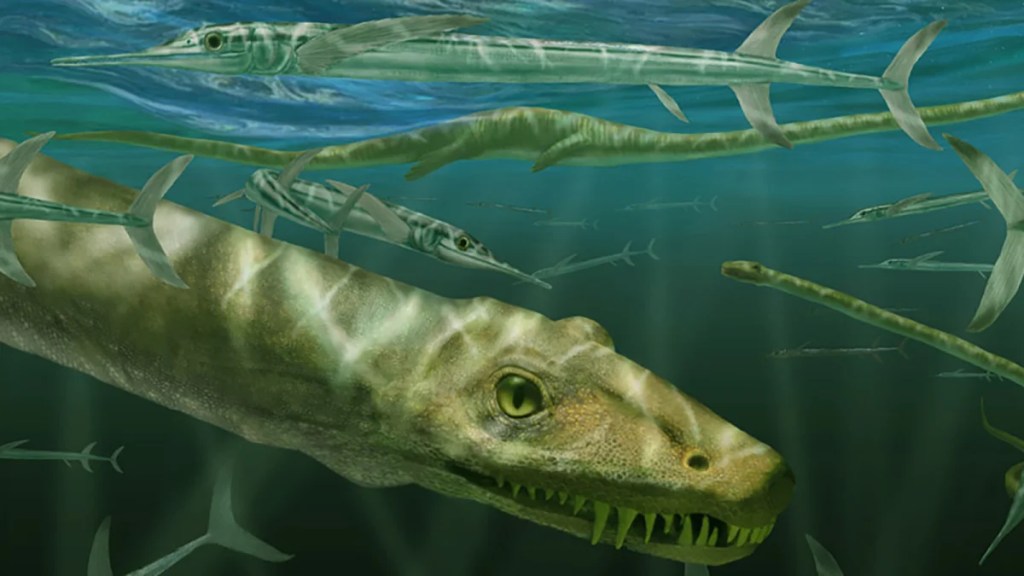Check out the 240-million-year-old “dragon” fossil that scientists managed to reveal

(CNN) – National Museums Scotland (NMS) said in a statement on Friday that the newly discovered fossils have allowed scientists to fully reveal the 240-million-year-old “dragon”.
The five-meter-long reptile from the Triassic period in China was first identified in 2003. However, after studying five more recent specimens over a period of ten years, scientists were finally able to picture the complete animal, which has been named. Dinocephalosaurus orientalis.
National Science Officer of NMS and one of the researchers, Dr. A perfectly articulated fossil, the last to come to light, “offered a pretty complete specimen from the tip of the nose to the tip of the tail,” Nick Fraser said in the interview. with CNN.
“It’s built in a sort of figure-of-eight shape and… it’s very reminiscent of a Chinese dragon,” he explained.
That fossil helped shed light on this mysterious creature, and an international team of researchers from Scotland, Germany, the United States and China published their findings in the journal Earth and Environmental Science Transactions of the Royal Society of Edinburgh.
Professor Li Chun of the Beijing Institute of Vertebrate Paleontology and Paleoanthropology was the first to discover the fossil in 2003. He was visiting a small village in southern China’s Guizhou province when he noticed a small spine in a limestone slab, according to colleague Frazer.
Local farmers then took Chun to another location where there were other pieces of that type of rock, and they began looking for bone fragments and putting them together to find this new species, Fraser added.

An artistic interpretation of an ancient sea creature. (Credit: Marlene Donnelly)
Now, more recent fossils show that the creature had 32 vertebrae, creating an extremely long neck that helped it catch fish, although scientists are still unsure of its exact function.
“I’m still amazed by the long neck function,” Fraser said. “The only thing I can think of is that they were feeding in water that had rocks and maybe cracks in it. “And they were using their long necks to probe and move into some of these crevices and maybe catch prey that way,” he said.
The fish still has a fossilized stomach region, indicating that it was well-adapted to a marine environment, and its winged limbs reinforce that hypothesis, the researchers explained in their paper.
They added that the long neck of Dinocephalosaurus It was similar to other ancient and equally enigmatic marine reptiles Tanystropheus hydroides.
“As paleontologists, we use modern analogs to understand past life. for Dinocephalosaurus And Tenistrophius, there is no modern analogue,” Fraser said. In addition, researchers can compare creatures such as ichthyosaurs to their modern counterparts such as tuna and dolphins.
“So we still have some constraints, as we do with a lot of animals in the Triassic, because it’s a really weird and wonderful world with all kinds of weird animal things that animals don’t do today.”



:quality(75)/cloudfront-us-east-1.images.arcpublishing.com/elcomercio/7PSZB6FNRRGAHPBOI74BI5NDFY.jpg)

:quality(75)/cloudfront-us-east-1.images.arcpublishing.com/elcomercio/U6D2BGJ3AZGBPJ2P5XNQ4BKZIM.png)